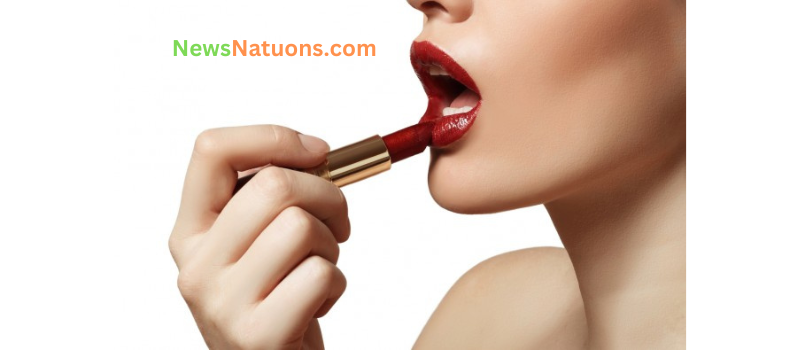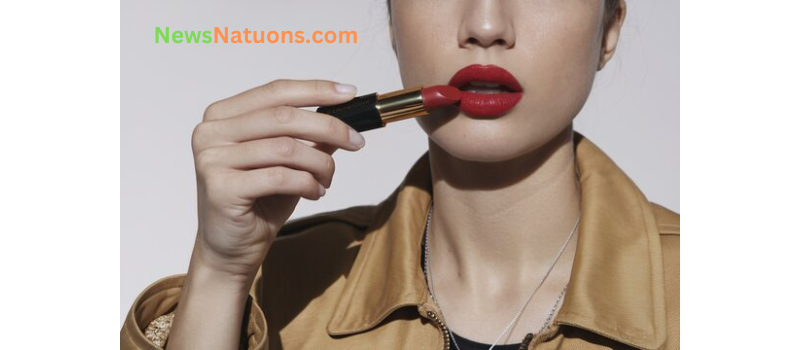Lipstick has long been regarded as one of the most iconic symbols of feminine beauty. It is not bound by any formal invitation or special occasion—often applied simply on a whim, it remains an effortless yet striking accessory for women across generations. What many may not know is that the history of lipstick spans over five millennia, with its roots embedded deep within the world’s earliest civilizations.
Ancient Civilizations and the Birth of Lipstick
The earliest records of lipstick can be traced back to the Sumerian civilization in the Indus Valley, approximately 5,000 years ago. In those ancient times, both men and women would use finely ground precious stones, blended with various extracts and oils, to color their lips, eyes, and cheeks. This practice not only enhanced physical appearance but also carried cultural and symbolic meanings. The people of that era understood the power of color and ornamentation as a means of expression and status.
In ancient Egypt, the iconic Queen Cleopatra was known for her unique beauty rituals. She reportedly used extracts from insects, flowers, and other organic materials to craft her own lip colors. For the Egyptians, coloring the lips wasn’t just a matter of beauty—it symbolized status and power. Wearing lipstick signified one’s position in society, and bold shades often communicated strength and prestige.
Chinese Innovations in Lipstick Crafting
Around 1,000 years ago in ancient China, the art of lipstick took another creative leap. Chinese women began crafting lip colors using wax extracted from bee hives combined with the fragrant essences of local flowers. This mixture was shaped into small rectangular sticks, similar in form to modern lipsticks. To enhance the sensory experience, aromatic oils were added, making the application of lipstick not only visually appealing but also pleasantly scented. This development marked a significant transition in the cosmetic industry, as lip color became more refined and portable.
The European Influence and Royal Endorsement
The popularity of lipstick found new life in 16th-century England when Queen Elizabeth I became a trendsetter. She frequently appeared in public with strikingly red lips against her pale white skin, creating a bold contrast that soon became a fashion statement. Her signature look captured the imagination of her subjects and propelled red lipstick into the realm of public fascination. From royalty to commoners, women began to emulate her style, cementing lipstick as an essential part of beauty routines in Europe.
Lipstick Today: A Legacy of Beauty
From its humble beginnings in ancient rituals to its present-day status as a staple in every makeup bag, lipstick has evolved but never faded from relevance. It remains a powerful form of self-expression and confidence for women worldwide. Whether it’s a soft nude for a casual day out or a bold red for a night event, lipstick continues to celebrate individuality and elegance.
Even after thousands of years, the simple act of coloring one’s lips connects modern women with the ancient traditions of beauty. Lipstick is more than just a cosmetic—it’s a timeless symbol of identity, strength, and style.
لپ اسٹک خواتین کا ایسا سنگھار ہے جو کسی تقریب یا خاص موقع کا محتاج نہیں۔ جب دل چاہے، لپ اسٹک لگا لی جاتی ہے، اور یہ ہونٹوں کو خوبصورتی اور جاذبیت عطا کرتی ہے۔ لیکن کیا آپ جانتے ہیں کہ لپ اسٹک کی تاریخ پانچ ہزار سال پرانی ہے؟ اس کا آغاز قدیم تہذیبوں سے ہوا، اور آج بھی یہ خواتین کے سنگھار کا اہم حصہ ہے۔
قدیم تہذیبوں میں لپ اسٹک کا آغاز
لپ اسٹک کا ابتدائی استعمال وادیٔ مہران کی سمیرین تہذیب میں پایا جاتا ہے۔ پانچ ہزار سال قبل، قیمتی پتھروں کو باریک سفوف میں تبدیل کر کے مختلف اقسام کے عرق کے ساتھ ملا کر نہ صرف ہونٹ بلکہ آنکھیں اور رخسار بھی رنگے جاتے تھے۔ ان رنگوں کا استعمال صرف حسن بڑھانے کے لیے نہیں تھا بلکہ یہ سماجی مرتبے کی علامت بھی تھے۔
اسی طرح مصر کی مشہور ملکہ قلو پطرہ نے بھی مختلف کیڑوں، جانداروں اور پھولوں کے عرق سے لپ اسٹک تیار کی۔ مصر میں ہونٹ رنگنے کو ایک “اسٹیٹس سمبل” سمجھا جاتا تھا، یعنی یہ ظاہر کرتا تھا کہ پہننے والا شخص کس طبقے سے تعلق رکھتا ہے۔
چین میں لپ اسٹک کی تخلیقی ترقی

چین میں ایک ہزار سال قبل خواتین نے لپ اسٹک کو نئی شکل دی۔ شہد کی مکھیوں کے چھتے سے حاصل کردہ موم کو مختلف پھولوں کے عرق کے ساتھ ملا کر مستطیل شکل میں لپ اسٹک تیار کی گئی۔ اس میں مختلف خوشبو دار تیل بھی شامل کیے گئے تاکہ لپ اسٹک نہ صرف خوبصورت دکھے بلکہ خوشبو بھی دے۔ یہ ایجاد اس بات کا ثبوت ہے کہ لپ اسٹک وقت کے ساتھ مزید نفیس اور کارآمد بنتی گئی۔
یورپ میں لپ اسٹک کی مقبولیت
سولہویں صدی میں انگلستان کی ملکہ ایلزبتھ اول نے لپ اسٹک کے استعمال کو ایک نیا رجحان بنایا۔ انہوں نے سرخ رنگ سے اپنے ہونٹ رنگے اور اپنی دودھ جیسی سفید رنگت کے ساتھ نمایاں انداز میں عوام کے سامنے آئیں۔ ان کی یہ طرزِ زیبائش اتنی مقبول ہوئی کہ عام خواتین بھی ان کی تقلید کرنے لگیں۔ یوں لپ اسٹک یورپ میں فیشن کا حصہ بن گئی۔
آج کی لپ اسٹک: ایک روایت کا تسلسل
آج بھی لپ اسٹک خواتین کے حسن کو نکھارنے میں اہم کردار ادا کرتی ہے۔ چاہے سادہ روزمرہ کا دن ہو یا کوئی خاص موقع، لپ اسٹک شخصیت کو مکمل اور بااعتماد بناتی ہے۔ نرم گلابی رنگ سے لے کر گہرے سرخ رنگ تک، ہر رنگ اپنی ایک الگ شناخت رکھتا ہے۔
پانچ ہزار سال گزرنے کے باوجود، لپ اسٹک آج بھی خواتین کی خود اعتمادی اور خوبصورتی کی علامت ہے۔ یہ صرف ایک میک اپ پروڈکٹ نہیں بلکہ نسوانیت، اظہار اور خوبصورتی کا ابدی نشان ہے۔











